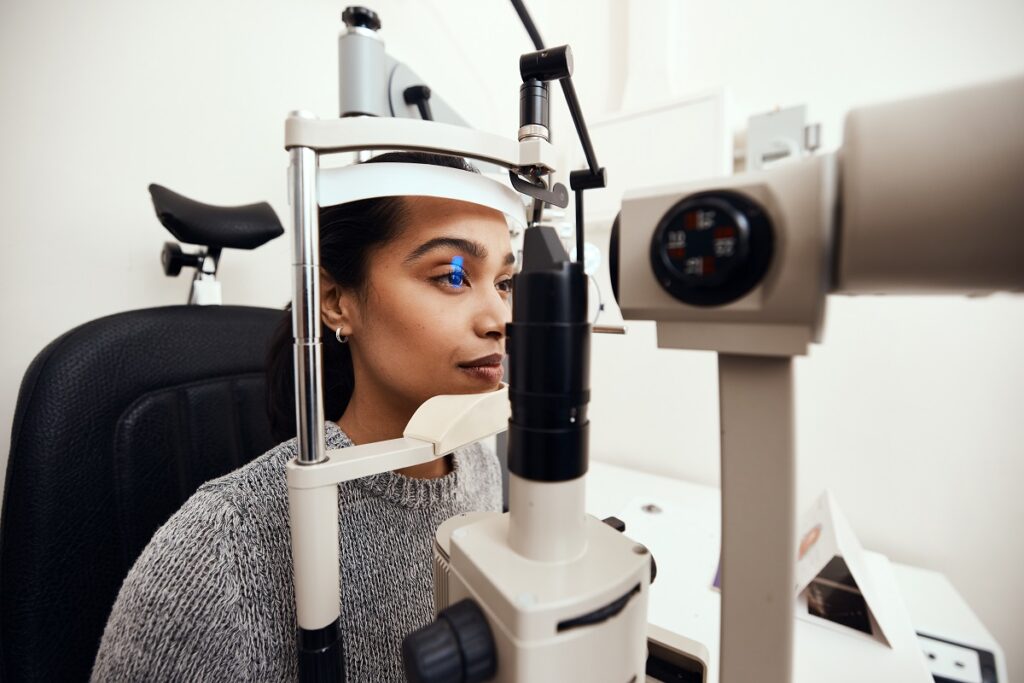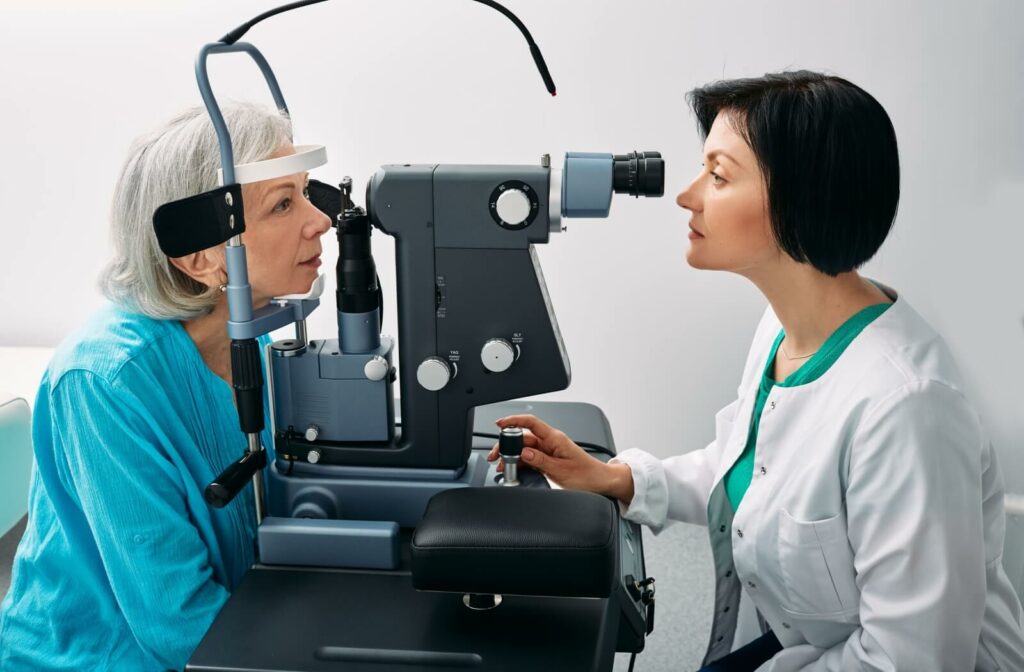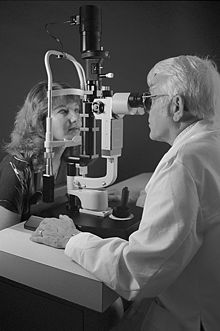Comprehending the Function of Your Eye Doctor in Keeping Vision
Comprehending the Function of Your Eye Doctor in Keeping Vision
Blog Article
Checking Out the current Technological Developments in Optometry and What They Mean for Optometrists
In the ever-evolving area of optometry, recent technical improvements are reshaping just how professionals approach eye treatment. From the accuracy of Optical Comprehensibility Tomography to the nuanced understandings supplied by AI-driven diagnostic devices, these technologies are setting brand-new standards in person evaluation and therapy. Teleoptometry is poised to redefine access, guaranteeing that know-how transcends geographical limitations. As these improvements permeate the technique, eye doctors are encountered with the difficulty of embracing these devices to improve patient outcomes. The inquiry remains: how will these technical shifts redefine the duties and obligations within the occupation?
Technologies in Diagnostic Tools
Advancing the field of optometry, developments in analysis tools have actually changed the means eye care specialists examine and diagnose ocular conditions and visual impairments. The past years has experienced substantial technological developments, enabling more detailed and precise evaluations.
An additional secret development is the intro of innovative corneal topography systems, which map the surface curvature of the cornea with accuracy. These tools are specifically valuable for fitting contact lenses and detecting corneal problems. In addition, electronic retinal imaging has changed conventional ophthalmoscopy, using thorough, scenic views of the retina that promote thorough visual assessments.
The development of wavefront aberrometry has additionally been important, enabling the analysis of refractive mistakes with unparalleled precision (Optometrist Chino). This innovation aids in personalizing restorative lenses and improving medical results for refractive surgical procedures. Jointly, these analysis improvements empower optometrists to deliver premium person care, making sure very early treatment and tailored therapy strategies, eventually enhancing aesthetic health results
AI in Patient Management
Building on the foundation of innovative analysis devices, the unification of synthetic knowledge (AI) in individual monitoring stands for a transformative leap for optometry. AI systems are significantly employed to enhance performance, accuracy, and customization in client care. By assessing vast quantities of information, AI can recognize patterns and forecast prospective eye problems, making it possible for optometrists to customize treatments a lot more properly. This ability is essential in managing chronic eye diseases such as glaucoma and diabetic retinopathy, where very early discovery and constant surveillance are key.
Furthermore, AI-driven platforms promote structured patient interactions and administrative processes. Automated organizing, online assessments, and individualized follow-up plans not just boost patient complete satisfaction but likewise enhance time monitoring for specialists. These systems can triage patients based upon the seriousness of their problems, ensuring that those in critical requirement receive punctual focus.
Furthermore, AI enhances decision-making by supplying optometrists with evidence-based suggestions and therapy paths. By incorporating data from digital wellness documents, AI tools use understandings that notify medical choices, minimizing the danger of mistakes and enhancing client end results. As AI continues to evolve, its duty in patient monitoring will likely expand, reshaping the landscape of optometric treatment.
Advancements in Retinal Imaging
In the world of optometry, retinal imaging has actually observed exceptional technical advancements that are improving analysis capacities and client care. Advancements such as Optical Comprehensibility Tomography (OCT) and fundus digital photography have reinvented just how optometrists examine the retina and picture.
Enhanced imaging methods like OCT angiography are further refining diagnostic accuracy. This non-invasive technique maps blood flow in the retina, providing crucial understandings into vascular health and wellness without the requirement for dye injections. In addition, adaptive optics innovation is being integrated into retinal imaging systems to remedy eye aberrations, supplying unprecedented image clarity. Such improvements facilitate the identification of min retinal changes that might symbolize disease development.
In addition, improvements in synthetic knowledge are boosting retinal imaging by allowing computerized evaluation of large datasets. These systems assist optometrists in recognizing patterns a measure of pathology, thus enhancing analysis precision and effectiveness. Collectively, these advancements are changing retinal imaging into a cornerstone of modern eye care, enhancing end results and expanding restorative possibilities.
Teleoptometry's Expanding Function
Teleoptometry is significantly coming to be an essential part of eye treatment, driven by innovations in data and diagnostic devices. As optometry welcomes electronic makeover, teleoptometry promotes remote assessments, permitting optometrists to prolong their solutions beyond conventional borders. This is particularly beneficial in rural and underserved areas where access to specialized eye care is usually minimal. By leveraging high-resolution video conferencing and progressed retinal imaging, eye doctors can carry out thorough eye tests from afar, guaranteeing prompt medical diagnosis and therapy.
The assimilation of expert system (AI) further enhances teleoptometry, enabling the evaluation of visual information and aiding in the discovery of eye conditions such as glaucoma and diabetic person retinopathy. AI-powered formulas can swiftly analyze complicated imaging information, offering eye doctors with valuable insights that strengthen scientific decision-making.
In addition, teleoptometry sustains continuity of care through smooth combination with digital health and wellness records (EHRs), permitting eye doctors to keep comprehensive patient histories. This makes sure that clients get individualized and regular treatment also when talking to various practitioners.
Regardless of these advantages, challenges continue to be, consisting of ensuring information safety and handling patient assumptions. Nonetheless, teleoptometry represents a considerable stride in the direction of even more easily accessible, effective, and patient-centered eye treatment. As innovation advances, its function is positioned to increase additionally.

Future Trends in Eye Care
A myriad of ingenious fads is readied to improve the future of eye treatment, driven by technological innovations and the developing needs of people. One significant pattern is the combination of artificial knowledge (AI) in diagnostics, which guarantees to enhance the precision and effectiveness of eye exams. AI formulas can examine More about the author huge quantities of information from retinal images, potentially identifying conditions like diabetic retinopathy and glaucoma earlier than standard approaches.
Furthermore, tailored medicine is gaining traction in optometry, with genetic testing informing personalized therapy strategies. This method intends to optimize client end results by customizing interventions to private genetic accounts. Wearable technology, such as clever call lenses, is likewise coming up, using real-time tracking of intraocular pressure or sugar degrees, hence offering continual understandings into ocular and systemic wellness.
The adoption of increased truth (AR) and virtual reality (VIRTUAL REALITY) in training and client education and learning is an additional emerging pattern. These technologies supply immersive experiences that can enhance understanding and abilities both for people and optometrists. As these patterns evolve, optometrists have to stay abreast of technological advancements to supply cutting-edge care, making certain improved client end results and complete satisfaction in the vibrant landscape of eye treatment.
Conclusion

Jointly, these diagnostic advancements encourage optometrists to deliver more tips here premium individual care, ensuring very early intervention and customized therapy techniques, ultimately boosting visual wellness results.

As these modern technologies continue to develop, eye doctors have to adjust and incorporate them into method, eventually optimizing process performance and elevating the standard of eye care provided to people.
Report this page